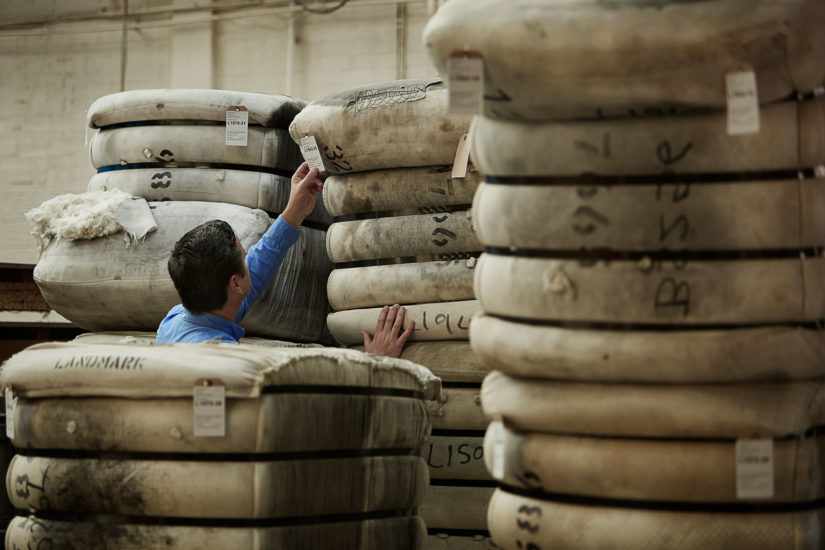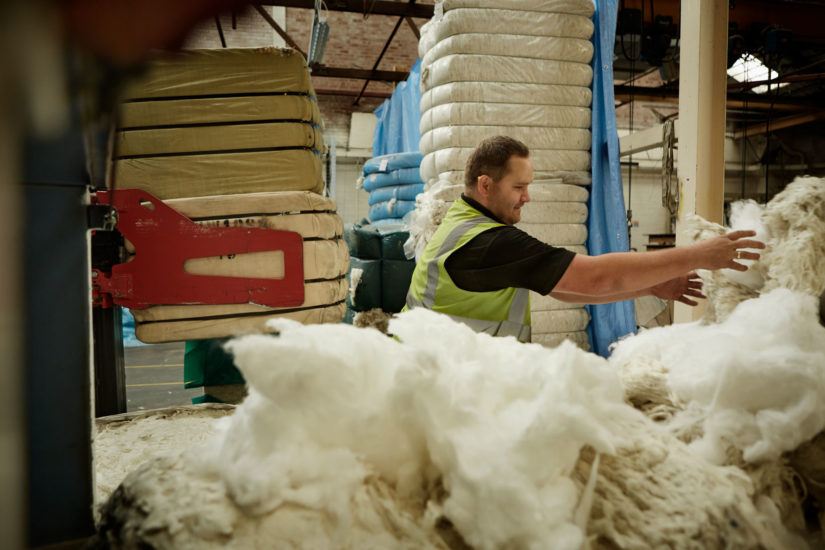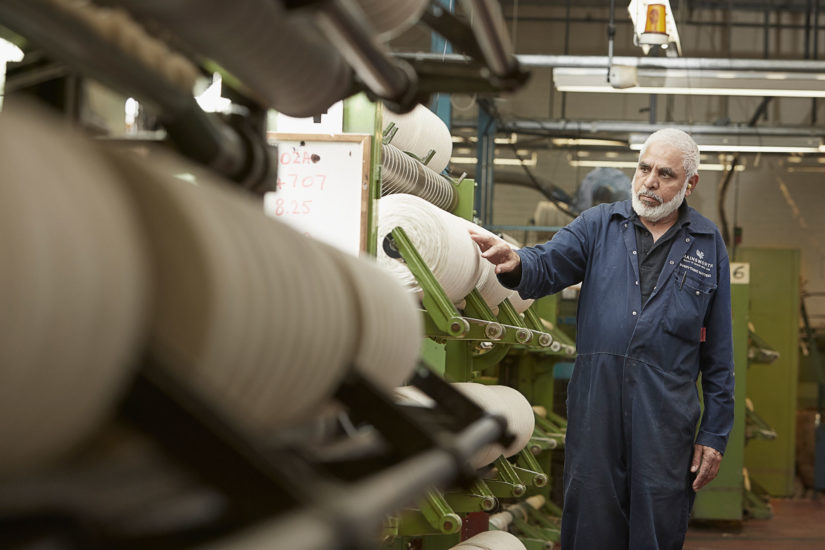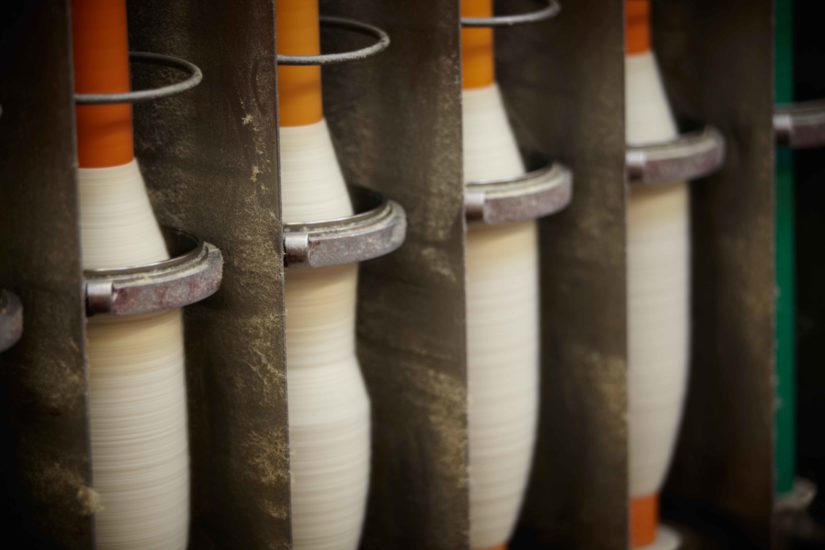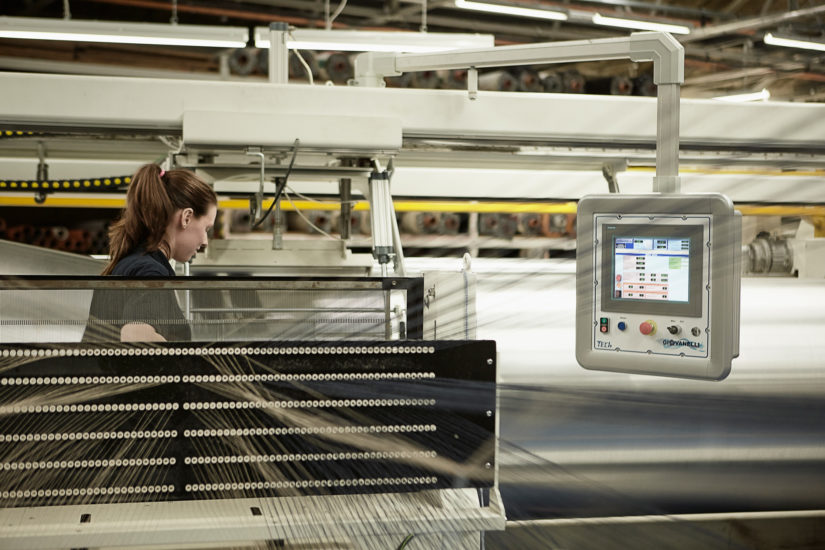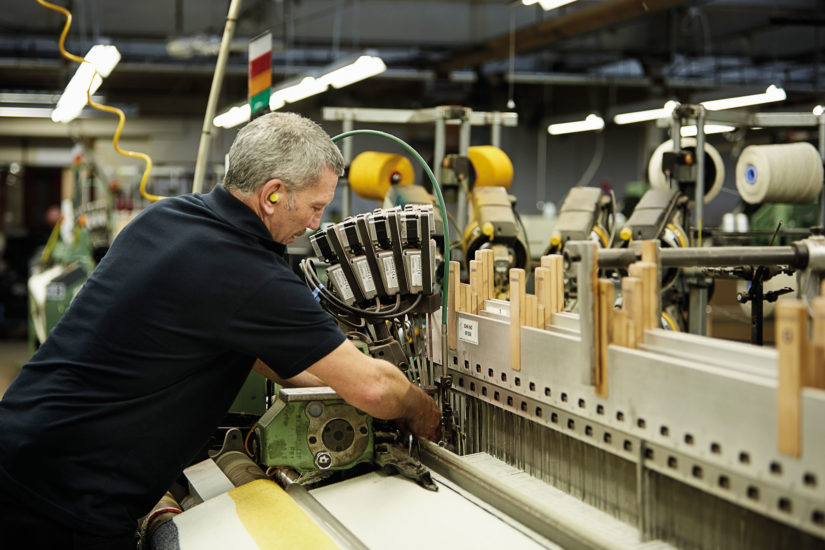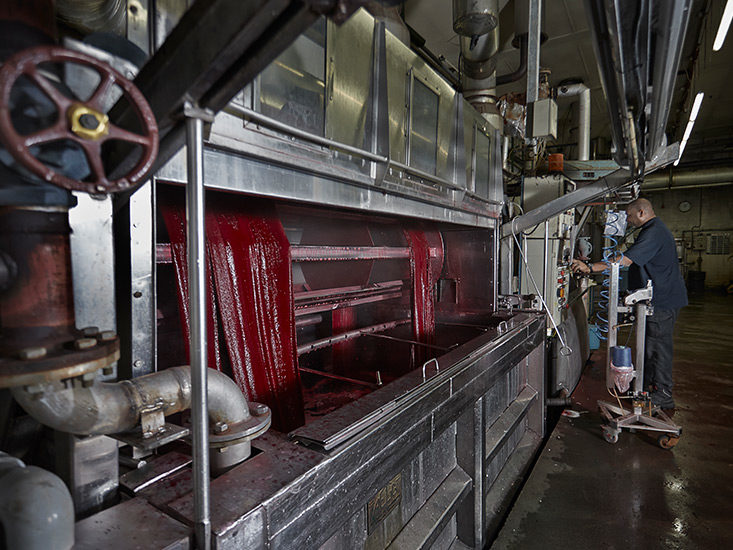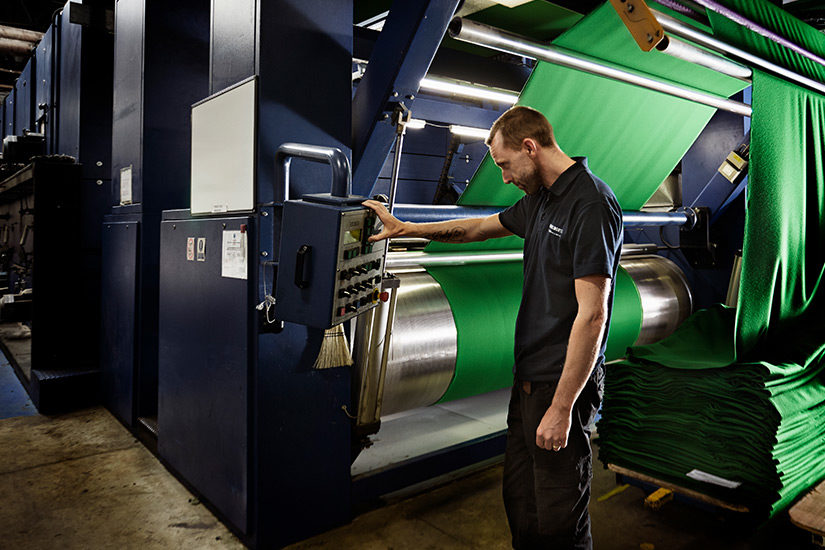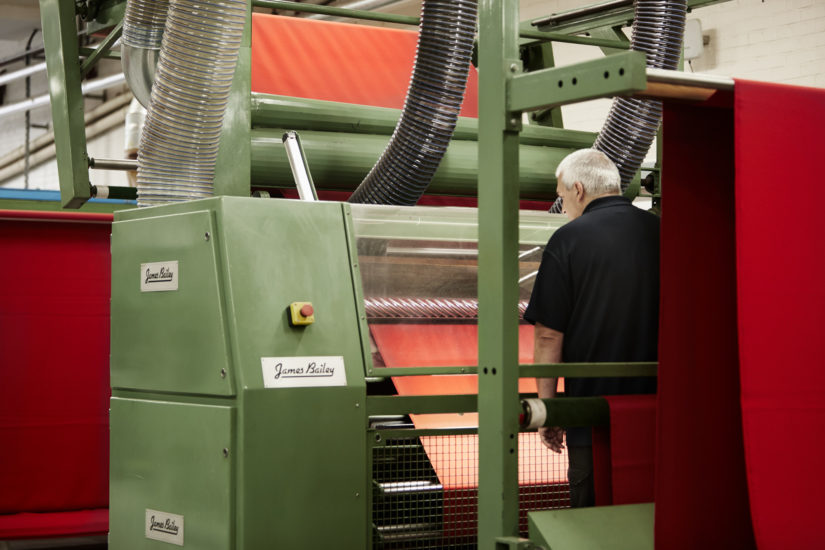Wool Store.
Our production and weaving process starts with the selection of the best fibre, lamb’s wool, merino wool or cashmere. This is an area of expertise that has been passed down through generations of the family. We use only the best wool from Britain, Australia and New Zealand. Different climates result in different wool qualities; to ensure we are using the perfect wool for each product we ensure we purchase a variety of quality raw fleece by visiting sheep farms, auction houses and merchants all over the world. Bales are kept in our dedicated Wool Store until ready to go into Blending.
